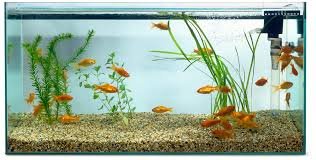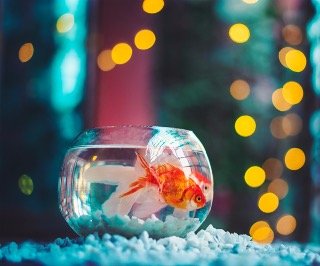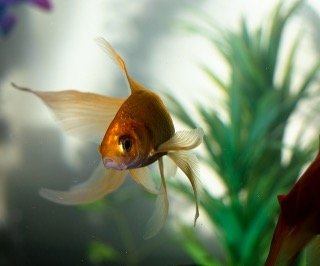
Introduction
Goldfish growth, like any animal, depends on diet and living conditions. The best you can do is pay attention to both. The former provides the raw materials necessary for fish growth and development. The latter decides whether to conserve or redirect resources to support survival or growth. It’s important to remember that the purpose of life is to live long enough to pass your genes on to the next generation. When things are uncertain, organisms focus on growth rather than reproduction. It means young or flower and seed. Winemakers understand this and put the vines to work for nutrition, focusing their resources on the grapes rather than the leaves.
How big do goldfish get? Goldfish grow from 2 inches to well over 10 inches in size in ponds. It can grow even bigger in the wild with unlimited resources and space. Rapidly grow from juvenile to large fish in the first few months. The driving force is survival. Avoiding predators and getting food is easy at this size…but there are many variables. Goldfish require approximately 29% protein and 12% fat in their diet for optimal growth.The ideal energy to protein ratio is 9.7 grams:1 gram. They eat a wide variety of foods, from plants to insects to invertebrates. Another thing to consider is the type of fish.
How fast do baby goldfish grow?
Surprisingly, goldfish are not edible immediately after hatching. Instead, it hides in vegetation or other safe places until it develops a mouth. They grow rapidly when they start swimming, and grow large in the first few weeks of life. Again, it’s all about survival and predator avoidance.
1st week
First-day goldfish fry are about 0.2 inches, or about the size of a grain of rice. By the end of the week, it nearly doubles in size to about 0.4 inches.
2nd week
The growth spurt continues through the second week. Again, the brood has nearly doubled to about 0.6 inches. In addition, the development of fins progresses and it looks like a fish.
3rd week
Things are going fast even in the third week. At this point, the goldfish is approaching 0.8 inches in length. Fin development is evident and aids in locomotion and feeding.
4th week
As your goldfish approaches maturity, you may notice that its growth rate slows somewhat. Depending on what you feed it, it will be about 0.9 inches in size. 5th week
A full set of goldfish fins. Growth is still slowing and there is not much difference in size.
6th week
The goldfish will be about 1 inch long. It doesn’t grow in size, but there is a lot going on under the hood to complete the development.
Week 7
The growth rate is about 10-15% per week, about 1.1 inches. They have just hatched and are about to have another boom.
How not to waste goldfish
One concern you may hear is the risk of stunting. Remember that genetics have a lot to do with a goldfish’s potential size.No matter what you do, its DNA will determine its length. Fish may look stunted, but that could be exactly what nature intended.There are other factors you can control. A lot of this is common sense. It’s worth noting that goldfish are vulnerable in their first few months of life. They are tolerant in adulthood, but not necessarily in adolescence.
How to speed up goldfish growth
Doing all of the things we suggested above will set you on your way to a bigger goldfish.A proper diet with the recommended amount of protein and fat will support rapid growth.Introducing a variety of meat-based foods to the young Providing will bring you much closer to that goal. But that doesn’t mean you should overeat them.
Garbage breaks down and turns into the same toxins mentioned for water quality. Feed only as much as your goldfish will eat in a few minutes.
You may also like to read Why Don’t Goldfish Live Longer?
Conclusion
Goldfish are great first pets for children and seasoned hobbyists. Stabilizing aquarium conditions and keeping water chemistry at a safe level is the best way for a fish to extend her 10-20 year lifespan. Fortunately, they are hardy animals that can handle stress well with proper nutritional support.





